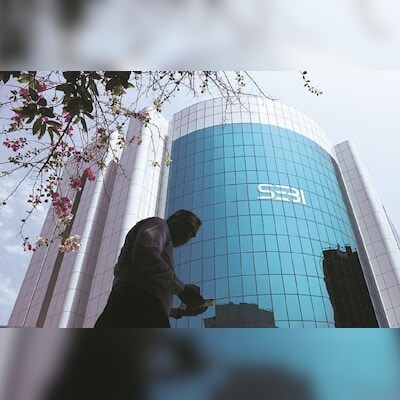)
Sebi said only the investors who failed to provide their drawdown amounts will bear the borrowing costs.
Capital markets regulator Sebi on Monday came out with guidelines for borrowing by Category I and Category II alternative investment funds (AIFs), along with the maximum permissible limit for extension of tenure by Large Value Fund for Accredited Investors (LVFs).
Under the rule, Category I and II AIFs are not allowed to borrow or use leverage for investments, except in limited cases for temporary needs.
These AIFs are allowed to borrow funds to address temporary funding needs or manage day-to-day operational expenses, with specific limitations.
Such borrowing is permitted for up to 30 days, can occur no more than four times in a calendar year, and must not exceed 10 per cent of the investable funds.
To facilitate ease of doing business and provide operational flexibility, Sebi has allowed Category I and Category II AIFs to borrow for the purpose of meeting temporary shortfall in amount called from investors for making investments in investee companies (‘drawdown amount’), according to a circular.
On conditions for borrowing, Sebi said borrowing must be disclosed in the Private Placement Memorandum (PPM) of the scheme. Borrowing is only allowed in emergencies as a last resort.
The borrowed amount cannot exceed the lower of 20 per cent of the investment, 10 per cent of the fund’s investable assets, or the pending commitments from other investors.
Sebi said only the investors who failed to provide their drawdown amounts will bear the borrowing costs.
Borrowing cannot be used to give different drawdown timelines to investors and details of borrowing and repayment must be disclosed to all investors regularly.
AIFs must wait 30 days between two borrowing periods, calculated from the repayment date of the previous borrowing.
On extension of tenure for LVFs, Sebi said it can be done by up to five years with the approval of two-thirds of unit holders.
LVFs with no disclosed extension period or an extension period beyond five years must align with the five-year limit by November 18. They can revise their original tenure if all investors agree, and they must submit an undertaking to Sebi confirming this by November 18.
They must update their extension details in the quarterly report for the quarter ending December 31, 2024.
New modalities for Venture Capital Fund to migrate to AIF rules
Sebi has also outlined the process and conditions for Venture Capital Funds (VCFs) for migrating to the Alternative Investment Funds (AIF) rules.
The regulator, in July, permitted VCFs registered before the introduction of AIF regulations to transition to the current regulations by becoming migrated venture capital funds.
In its circular, the Securities and Exchange Board of India (Sebi) said that VCFs can now choose to migrate to AIF Regulations to handle unliquidated investments after their scheme tenure ends.
This option is available until July 19, 2025.
A ‘Migrated VCF’ is a VCF that transitions to become a sub-category of VCF under Category I – Alternative Investment Fund as per the AIF norms.
On application requirements, Sebi said that VCFs wishing to migrate must submit their original registration certificate and specific information as outlined by the regulator.
With regards to the conditions for VCFs with active schemes, Sebi said that if the liquidation period hasn’t expired, they can migrate, with the scheme’s tenure continuing as originally disclosed or determined with investor approval.
If the liquidation period has expired, they must not have any unresolved investor complaints and will get an extra year (until July 19, 2025) to liquidate.
On post-migration considerations, Sebi said that after migration, existing investors, investments, and units will be transferred under the AIF Regulations without change.
With regards to VCFs not opting for migration, Sebi said that VCFs with active schemes will face stricter reporting requirements and VCFs with expired schemes may face regulatory action.
“Scheme(s) of VCFs, whose liquidation period (in terms of Regulation 24(2) of VCF Regulations) has not expired, shall be subject to enhanced regulatory reporting… in line with the regulatory reporting applicable to AIFs under AIF Regulations,” said the Sebi circular.
It further said that “VCFs having at least one scheme whose liquidation period (in terms of Regulation 24(2) of VCF Regulations) has expired shall be subject to appropriate regulatory action for continuing beyond the expiry of their original liquidation period.”
VCFs that have wound up all schemes or haven’t made any new investments would be required to surrender their registration by March 31, 2025, Sebi said.
First Published: Aug 19 2024 | 5:45 PM IST
